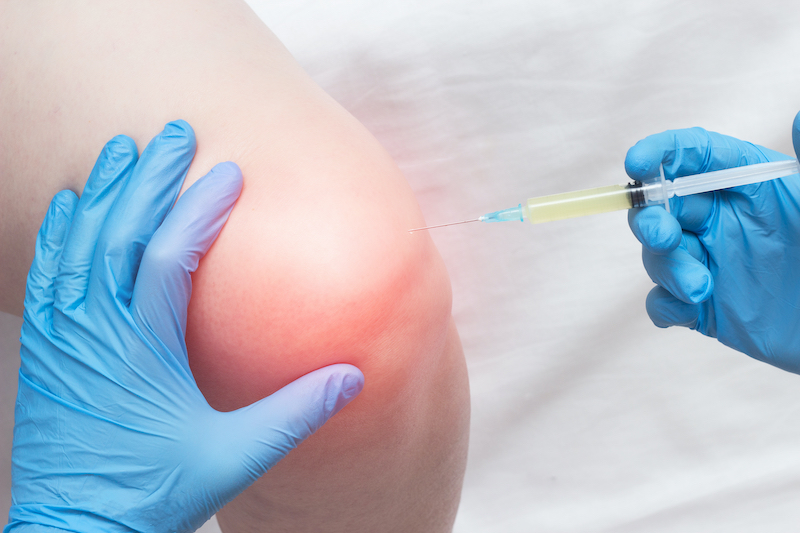Study shows that physical therapy produces
greater improvements than injections for knee arthritis
In our last blog, we discussed the prevalence of knee osteoarthritis and examined the role of imaging tests in the diagnosis and follow up of patients with this condition. We also explored why seeing physical therapist for knee pain first is always a smart choice because it will get you started on a movement-based program to regain your abilities from the start.
Should You Consider Steroid Injections?
But physical therapy is just one of many treatments available for knee osteoarthritis. Another popular option is the use of steroids that are injected into the affected knee to alleviate symptoms. Steroid injections are frequently used for patients with knee osteoarthritis, but there is conflicting evidence regarding their effectiveness and how long these benefits last. The guidelines regarding these injections also vary, and although rare, they have been associated with complications like infection and accelerated loss of articular cartilage.
Physical therapy has been recommended by some guidelines and was traditionally utilized frequently to treat knee osteoarthritis, but its use has been declining in recent years. According to one large study, four times as many patients with knee osteoarthritis received a steroid injection as physical therapy before undergoing knee surgery. It’s also been found that steroid injections don’t lead to any additional benefits to physical therapy for these patients.
For these reasons, a recent study was conducted to compare the effectiveness of steroid injections to physical therapy for patients with knee osteoarthritis. Researchers randomly assigned 156 participants with knee osteoarthritis to receive either ≤3 steroid injections over one year or ≤8 treatment sessions with a physical therapist over 4–6 weeks. In each session, the therapist would perform a series of hands-on, manual techniques to the knee and surrounding area that were intended to make it easier for the patient to perform various exercises and knee movements.
All patients were assessed before treatment began and then again one year later with the Western Ontario and McMaster Universities Osteoarthritis (WOMAC) Index, which scores patients from 0 to 240, with higher scores indicating worse pain, function, and stiffness. Another outcome measure called the Global Rating of Change Scale was also used to assess patients’ symptoms, with higher values indicating greater improvements.
After one year, patients who received steroid injections reported WOMAC scores of 55.8, while those who received physical therapy reported scores of 37.0. In addition, scores on the Global Rating of Change scale were +4 (“moderately better”) in the steroid injection group and +5 (“quite a bit better”) in the physical therapy group.
Physical Therapy for Knee Arthritis is the Clear First Choice…But Some Still Need Surgery
Together, these findings show that physical therapy was more effective than steroid injections for patients with knee osteoarthritis, as they experienced greater improvements in pain, physical function, and stiffness one year after undergoing the intervention. Other studies have also identified a similar trend, with both injections and physical therapy producing similar outcome, but the benefits of therapy lasting for at least one year. Therefore, physical therapy appears to be the better option of the two since it outperformed steroid injections in the long term.
With this in mind, if your knee is bothering you and osteoarthritis may be responsible, we strongly recommend seeing a physical therapist first before considering other injections and other possible treatments.

